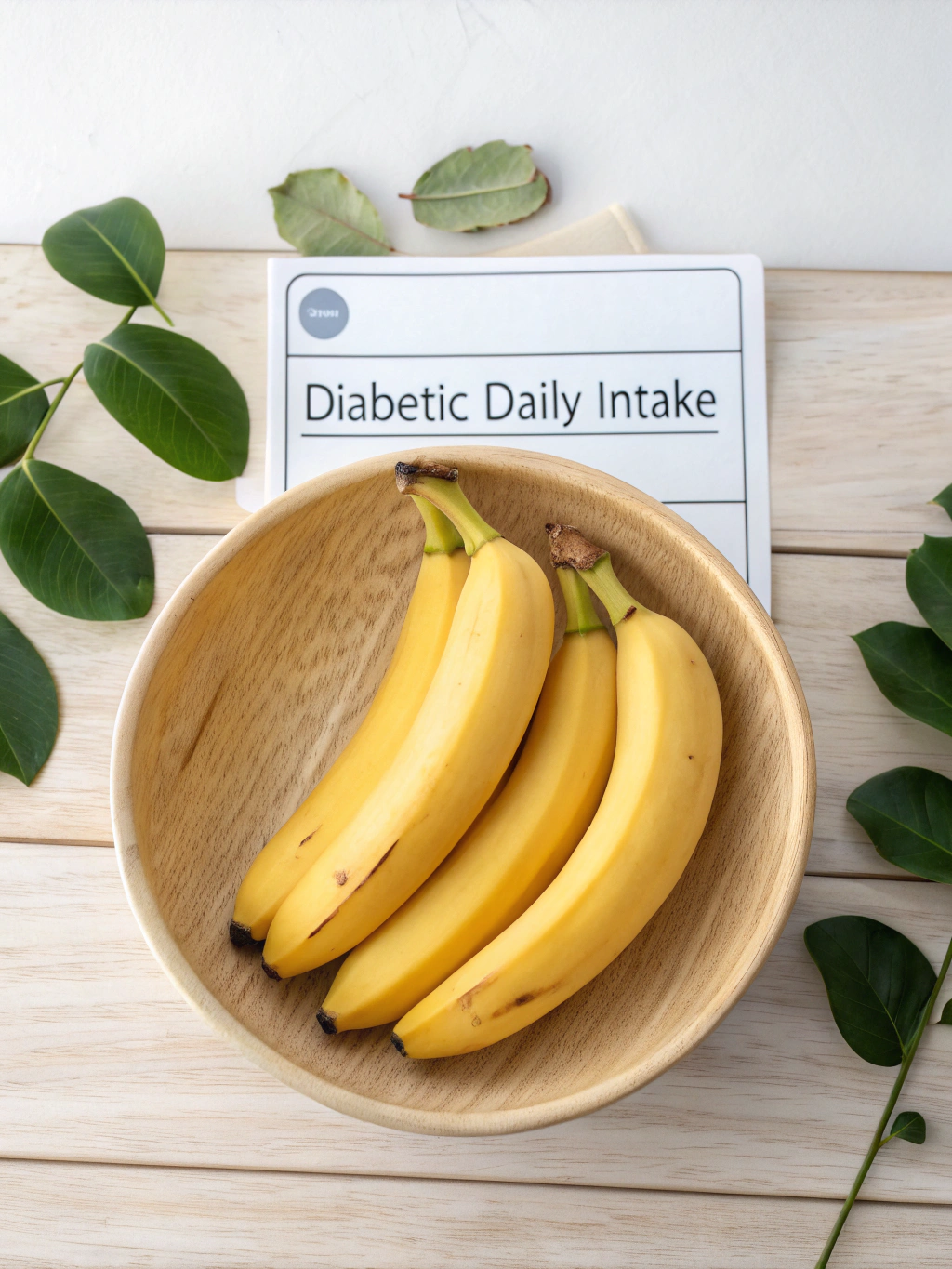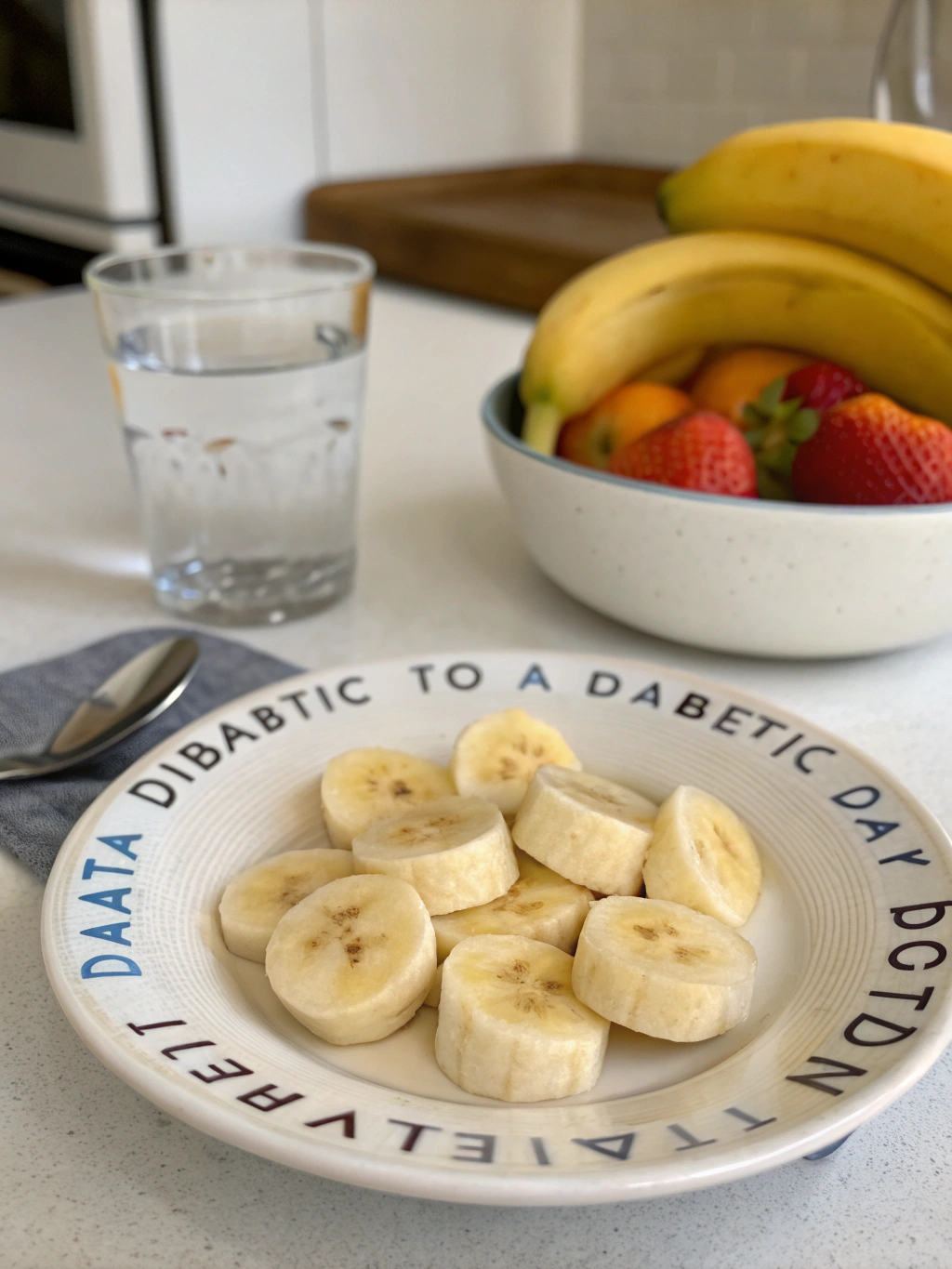Table of Contents
Introduction
Is that sweet, yellow fruit sitting in your kitchen forbidden territory if you have diabetes? The question of how many bananas can a diabetic eat a day isn’t as straightforward as you might think. While bananas contain natural sugars that can affect blood glucose levels, they’re also packed with essential nutrients that can be beneficial for people with diabetes when consumed appropriately. According to the American Diabetes Association, no fruit is completely off-limits for diabetics—it’s all about portion control and understanding how specific fruits affect your individual glucose response. This comprehensive guide will help you navigate banana consumption safely while managing diabetes effectively.
Ingredients List

When considering bananas in a diabetic diet, it’s important to understand what you’re actually consuming:
- Medium banana (118g): Nature’s perfectly packaged fruit with approximately 27g carbohydrates
- Fiber content: 3.1g of digestion-slowing fiber that helps moderate blood sugar impacts
- Potassium: 422mg (9% of daily needs) for blood pressure regulation
- Vitamin B6: 0.4mg (25% of daily needs) for metabolism support
- Vitamin C: 10.3mg (11% of daily needs) for immune function
- Magnesium: 31.9mg (8% of daily needs) for insulin sensitivity
For those concerned about sugar content, consider these alternatives: berries (lower glycemic index), apples with skin (higher fiber), or green bananas (contain resistant starch).
Timing
Understanding when to incorporate bananas into your daily meal plan can significantly impact how they affect your blood glucose:
- Best consumption time: Mid-morning or as a pre-workout snack (30-60 minutes before exercise)
- Worst time: On an empty stomach first thing in the morning (can cause rapid blood sugar spike)
- Digestion period: Approximately 2-3 hours for complete processing
- Blood sugar monitoring: Test before and 2 hours after eating to understand your personal response
Research shows consuming a banana with a source of protein or healthy fat can reduce blood sugar impact by up to 30%.
Step-by-Step Instructions
Step 1: Select the Right Banana
Choose bananas with some green on the peel for lower sugar content. Fully yellow bananas have a glycemic index of approximately 51, while slightly green ones can be closer to 42, making them gentler on blood sugar levels.
Step 2: Measure Your Portion
Precision matters when managing diabetes. A half of a medium-sized banana (about 60g) contains roughly 13g of carbohydrates, making it a reasonable portion for most diabetics. Use a food scale initially until you can eyeball portions accurately.
Step 3: Pair Strategically
Combine your banana portion with protein or healthy fat sources. Try 1-2 tablespoons of unsweetened nut butter, a small handful of walnuts, or incorporate into a protein smoothie to slow glucose absorption.
Step 4: Track Your Response
Monitor your blood glucose before eating and 2 hours after to understand your personal response. Everyone’s metabolism differs—what works for others may not work for you.
Nutritional Information
For a medium banana (118g):
- Calories: 105
- Total Carbohydrates: 27g
- Dietary Fiber: 3.1g
- Sugars: 14.4g
- Protein: 1.3g
- Fat: 0.4g
- Glycemic Index: 51 (medium)
- Glycemic Load: 13 (medium)
The glycemic load of 13 places a medium banana in the moderate range, which means it can fit into a diabetic meal plan when portioned appropriately. Studies indicate that individuals with well-controlled Type 2 diabetes can generally tolerate 15-20g of carbohydrates from fruit per serving.
Healthier Alternatives for the Recipe
Instead of consuming a whole banana, consider these diabetes-friendly alternatives:
- Banana “coins”: Slice half a banana into rounds and freeze for a satisfying treat with built-in portion control
- Green banana flour: Contains resistant starch that has minimal impact on blood sugar
- Mixed fruit approach: Combine a few pieces of banana with berries to lower the overall glycemic load
- Banana “ice cream”: Blend frozen banana chunks with unsweetened almond milk and cinnamon for a dessert alternative
Serving Suggestions
Incorporate your banana portion wisely with these diabetes-friendly serving ideas:
- Morning boost: ½ banana sliced on top of Greek yogurt with a sprinkle of cinnamon
- Energy bite: ½ banana with 1 tablespoon almond butter before a workout
- Smoothie addition: ⅓ banana blended with spinach, protein powder, and unsweetened almond milk
- Dessert substitute: Frozen banana slices (½ banana) dipped in dark chocolate (70%+ cocoa)
Common Mistakes to Avoid
- Eating overripe bananas: The browner the banana, the higher the sugar content. A fully brown banana can have up to 35% more sugar than a yellow one with green tips.
- Consuming banana alone: Without protein or fat to slow digestion, the carbohydrates may cause a rapid glucose spike.
- Ignoring personal response: Data shows glucose responses to identical foods can vary by up to 40% between individuals.
- Overlooking portion size: A large banana can contain nearly twice the carbohydrates of a small one.
Storing Tips for the Recipe
- Refrigerate ripe bananas to slow further ripening and sugar development
- Freeze peeled banana chunks in single portions (½ banana per container) for easy access
- Store green bananas at room temperature until they reach desired ripeness
- Pre-portion sliced bananas with nuts or seeds in containers for grab-and-go snacks
Conclusion
Can diabetics eat bananas, banana for diabetes, banana serving size diabetes, fruits for diabetics, safe fruits for diabetics are common concerns that don’t require complete fruit avoidance. For most people with diabetes, a half of a medium banana daily is a safe serving size that provides valuable nutrients without causing problematic blood sugar spikes. Remember that individual responses vary, so personal glucose monitoring remains your best guide. By pairing your banana portion with protein or healthy fats and being mindful of ripeness and timing, you can enjoy this nutritious fruit as part of a balanced diabetes management plan.
FAQs
Can diabetics eat bananas every day?
Yes, most diabetics can safely eat a small portion (half of a medium banana) daily, especially when paired with protein or healthy fats to slow glucose absorption.
Are green or yellow bananas better for diabetics?
Green or slightly green bananas are generally better for diabetics as they contain more resistant starch and less sugar, resulting in a lower glycemic impact.
How does banana ripeness affect blood sugar?
As bananas ripen, their starches convert to sugars, increasing their glycemic impact. A spotted brown banana has approximately 35% more sugar than a yellow banana with green tips.
Can I eat banana on an empty stomach if I have diabetes?
It’s best to avoid eating banana on an empty stomach as this may cause a rapid blood sugar spike. Instead, pair it with a source of protein or consume as part of a balanced meal.
What time of day is best for diabetics to eat bananas?
Mid-morning or pre-workout tends to be optimal for most people with diabetes, as these times typically align with periods of higher insulin sensitivity or when the body can better utilize the carbohydrates for energy.

